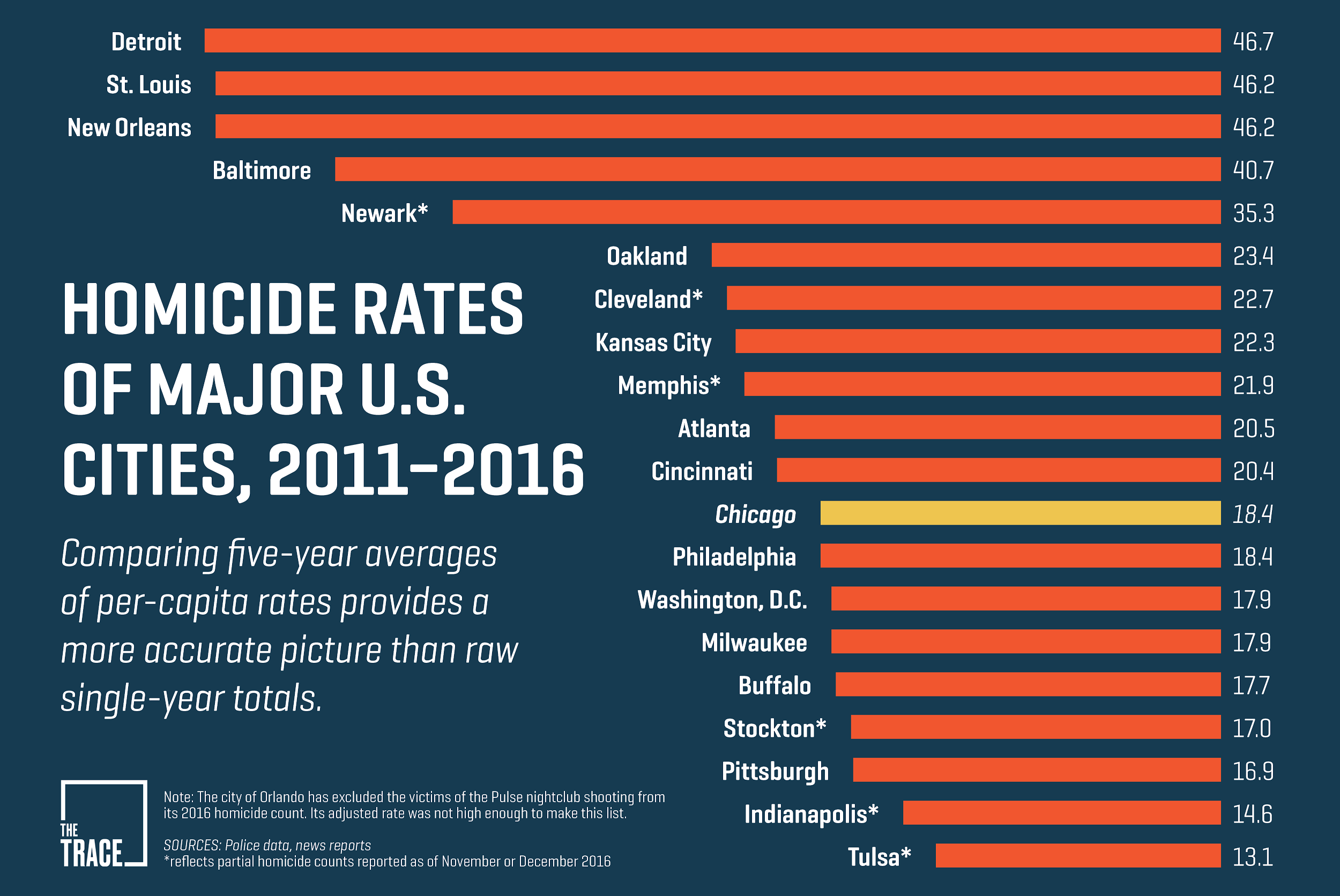Even before Donald Trump tweeted that he would “send in the Feds!” if officials couldn’t end Chicago’s rampant violence, the Bureau of Alcohol, Tobacco, Firearms and Explosives was working on an aggressive plan to beef up its resources there, according to an internal memo obtained by The Trace.
The memo, dated early this year — before the Trump administration took office and before his tweet — is described as an “action plan” intended to “implement a relevant and sustainable intelligence-driven strategy to make an impact on firearms-related violence in the City of Chicago.”
It indicates that the ATF’s Chicago field office should merge its intelligence unit with two new enforcement teams, add new staff, and concentrate its agents in three of the city’s most dangerous neighborhoods. The memo is unsigned, and does not name recipients.
Last year was the deadliest for Chicago since the early 1990s, with 764 homicides. More than 4,000 people were shot in the city and survived. This year has not been much better. As of April 2, there were 141 homicides, compared to 144 in the same period last year.

A spokesman for the ATF said in February that the agency would send more personnel to Chicago to help curb the violence. The memo obtained by The Trace, described as an “executive summary” of plans to combat gun violence, provides some new detail about the agency’s strategy — though it isn’t clear whether the actions it outlines have been implemented or modified since it was written.
The memo says all local agents should be assigned to three of the most violent parts of the city’s south and southwest sides. There were about 40 ATF agents based in Cook County as of the beginning of this year.
The Chicago field office should direct new staff into two enforcement teams focused on violent crime, request volunteers from other field offices to help boost staffing, and place new hires with law enforcement experience in the Chicago office, the memo says. Monetary incentives should be offered in order to encourage agents to volunteer, it says.
The memo does not specify how many new agents or employees would be hired by the Chicago field office or transferred to it. The Department of Justice, which oversees the ATF, has not finalized its 2017 budget.
“Any meaningful reduction in violent crime must be a joint operation by law enforcement, prosecutors, community leaders, and other stakeholders,” the memo reads.
The memo says the field office will merge its gun intelligence section with the new enforcement teams. Presently, the intelligence group works closely with the Chicago Police Department, the Federal Bureau of Investigation, and other law enforcement agencies to solve crimes that may cross jurisdictional lines.
The entire endeavor would be branded the Chicago Crime Gun Strike Force, the memo indicates. This week, the ATF agent in charge of the Chicago office, Celinez Nunez, who took her post in February, told WBEZ that a strike force with this name would be operational by June 1.
Anthony Guglielmi, a spokesman for the Chicago Police, said his department had been working closely with ATF to devise a plan for bringing down the shooting and murder rate.
Guglielmi said the law enforcement agencies are working to track illegal guns coming into the city and trace guns that have been used in crimes. ATF’s new NIBIN van, a mobile laboratory that matches bullet casings to guns, is due in the city in a few weeks to help the city to process more casings faster, he said.
Contact Us
Learn how to contact our reporters securely.
Chicago Police have said one of their focuses in fighting crime this year will be in better using technology, including shot sensors and shell case tracing to catch shooters fast.
“We know there are plans in the works to increase federal resources to Chicago,” he said. “We hope it will help us build a machine to investigate and prosecute gun cases more effectively.”
Brian Garner, an ATF spokesman, declined to confirm the details of the Chicago plan, and stressed that nothing has been finalized.
“ATF is exploring various options as we are committed to furthering law enforcement efforts in Chicago,” he said. “One of those options is to send additional agents to Chicago on permanent transfers.”
Darrel Stephens, executive director of the Major Cities Chiefs Association, said the plan as described in the memo is sensible. He said combining intelligence operations with enforcement groups may help agents and police track down criminals faster. That’s especially important in Chicago, where a large number of crimes are acts of retaliation. If agents or police can track down a shooter in time to stop the retaliation against that person, they could stop a significant number of crimes, Stephens said.
“If the crime involves gangs, it’s wise not only to focus on trigger pullers, but also on preventing retaliation against them” he said.
Chicago made more headlines for violence than any other city last year. But when homicide is measured on a per-capita basis, St. Louis has the highest homicide rate — nearly double that of Chicago’s. Baltimore is second, followed by Detroit, New Orleans, and Cleveland.

